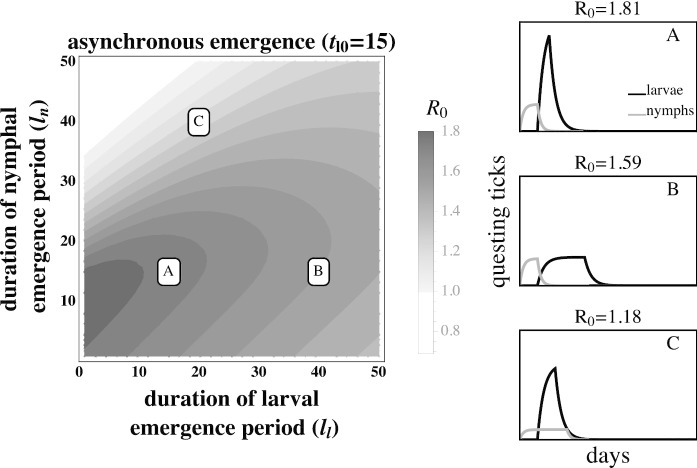Fig. 6.
Highly concentrated larval emergence increases when larvae emerge slightly after nymphs. (A) Concentrated nymphal emergence drives high mouse infection prevalence and results in high transmission to larvae when larval emergence is tightly concentrated (). (B) Transmission from mice to larvae decreases as larval emergence duration increases because larvae are more likely to feed on uninfected mice born after nymphal activity (). (C) Transmission from mice to larvae also decreases if larval emergence duration is highly concentrated and nymphal emergence duration is broad because many larvae feed before nymphs infect mice (). is calculated assuming tick emergence is where is the larval emergence length (see Appendix C.) (see Appendix A.) days; all other parameter values are shown in Table 1

